Emergency issues in 1915-1916
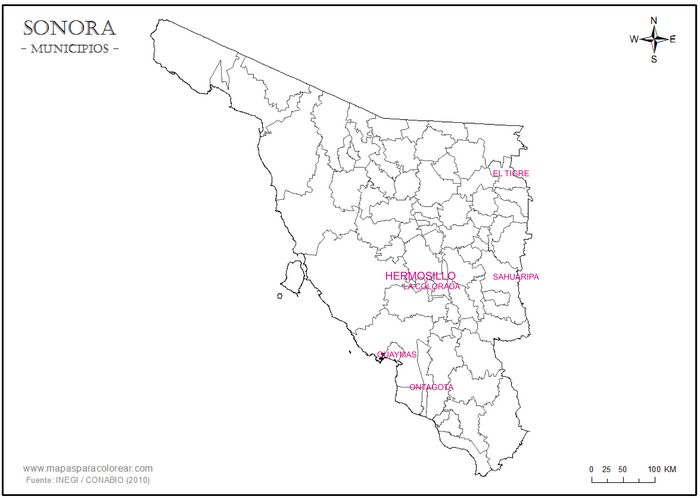
It seems that fractional notes did not re-appear until the second half of 1915 when the shortage (or unacceptability) of government money again made them necessary. In September some makeshift notes were circulating in Sahuaripa whilst in November some more professionally produced notes were used in the larger cities. Of these better quality notes all but two of those that have survived are for one peso, they have a standard format and text and an annotation that they would be redeemed at the issuers’ offices in quantities of five pesos for mixed banknotes. They were perforated down the left-hand margin so they must have been produced in booklets or pads. One such note comes from Hermosillo, one from Ontagota and the rest from Guaymas.
El Tigre
The Tigre Mining Company

On 30 July 1915 small shopkeepers complained to the Governor that the Tigre Mining Company was running a monopoly tienda de raya and damaging their business through its system of carteras. The company gave workers carteras marked ‘[NO ES] TRANSFERIBLE NI NEGOCIABLE’ but this only applied if someone else tried to cash them on paydays as the company store gave out merchandise against the notes without any checking. This was obviously to prejudice other small shopkeepers who accepted the notes and sold goods at lower prices. More annoyingly the ban only applied to Mexican businesses, as the company exchanged notes for Chinese and Japanese storekeepersAGHES, Fondo Oficialidad Mayor, tomo 3749. However, this is a case of company scrip rather than an emergency issue and lasted over a decade.
Sahuaripa
Alfredo Encinas
Alfredo Encinas was the local cacique, nephew of the judge Genaro Encinas and a rich cattleman, mining investor and local agent for the Banco de Sonora. He was perfecto of Sahuaripa from 1909El Tiempo, 11 February 1909 and as such, in 1911, acted against the Maderistas but abandoned the town because he could not rely on his men. He ended up in jail in Hermosillo charged with cowardiceThe Mexican Herald, 19 January 1911; Regeneración, Núm. 22, 28 January 1911. He seems to have been let off but finally sought refuge in the United States to avoid the revolution.
By 1915 Alfredo had returned to Sahuaripa and retired to private life. On 7 September 1915 the Presidente Municipal of Sahuaripa, Julio Schlemmer, gave Encinas permission to issue up to 500 pesos in notes of twenty-five centavos, fifty centavos and one peso[images needed]AGHES, Fondo Oficialidad Mayor, tomo 3044, letter to Secretario de Estado, 9 September 1915.
| from | to | total number |
total value |
|
| 25c | ||||
| 50c | ||||
| $1 | ||||
| $500.00 |
Two days later Schlemmer advised people that, in view of the depreciation that the revolutionary currency had suffered, they had to pay their taxes to the Municipal Treasury either in banknotes or in Encinas’ fractional notes. None of these notes survive.
In October 1915 his uncle Genaro, his brother Francisco and Alfredo himself were assassinated, either by bandits or by political rivalsLa Prensa, San Antonio, 18 October 1915.
Sostenes G. Valenzuela
Sostenes G. Valenzuela was a mine-owner from Tacupeto who was President Municipal of Valle de Tacupeto in 1904 and 1905. On 10 September Schlemmer gave Valenzuela permission to issue up to 500 pesos in notes of twenty-five centavos, fifty centavos and one peso[images needed] for use in Arivechi, Bámori and TacupetoAGHES, Fondo Oficialidad Mayor, tomo 3044.
| from | to | total number |
total value |
|
| 25c | ||||
| 50c | ||||
| $1 | ||||
| $500.00 |
Again, none survive.
Valenzuela later represented Sahuaripa as a deputy in the XXVII (1923-1925) and XXIX (1927-1929) state legislature and on 3 March 1929 was one of the signers of the Plan de Hermosillo, that inaugurated the Escobar rebellion.
By March 1916 businesses in Sahuaripa were refusing to accept the recently-enforced Constitutionalist money and the only currency in circulation was hand-written vouchers: one, for example, read
Debo $0-50 cincuenta centavos
en billetes de Banco
CJ Wendlandt[image needed]
another
Debo al portador $0-50c
cincuenta centavos en B. de B
(illegible signature)[image needed]
a third
Por $0-50
Al
Pague cincuenta cents
de feria que debo al por
tador
su atmi amigo y ss
Mayo 26 1916[image needed]AGHES, Fondo Oficialidad Mayor, no reference.
Mina Mexico Company
In September 1916 it was reported that the only money in circulation in Sahuaripa, outside of the worthless Carranza currency, were the cheques issued by the Mina Mexico Company, drawn on a bank in Douglas, which were used to pay the men and purchase goods in townThe Effects of the Revolution in Mexico on American-Mexican Mining Interests. Memorandum submitted to the American-Mexican Commission, September 1916.
The American-owned Mina Mexico company operated a mine and smelter 30 miles northwest of TonichiIn 1912 a Mr. Pomeroy was superintendent (The Mexican Herald, 14 January 1914).
Hermosillo
El Hermosillense
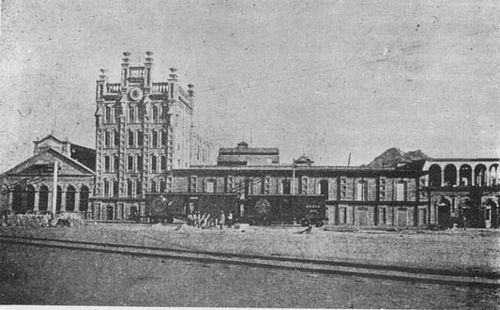
El Hermosillense, a five-storey building on the road out of Hermosillo was the largest flourmill on the west coast. The firm was started by Ramón Corral with the profits from his first mining venture (with Juan Nepomuceno Bringas) and managed by his protégé, Ricardo Uruchurtu. The same building housed the Planta de Luz Electrica with four dynamos capable of providing 240,000 watts of power. The salaries of the sixty employees were $54,000 a yearFederico Garcia y Alva, Album-Directorio del Estado de Sonora, Mexico, 1905-1907.
An unissued $1 remainder with the title ‘El Hermosillense Molino Harinero Planta de Luz y Fuerza Electrica’ is known.
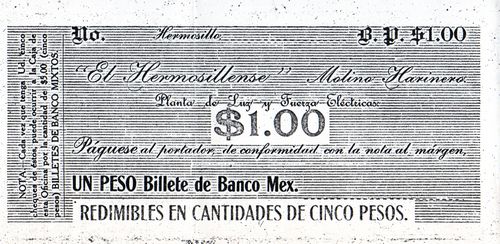
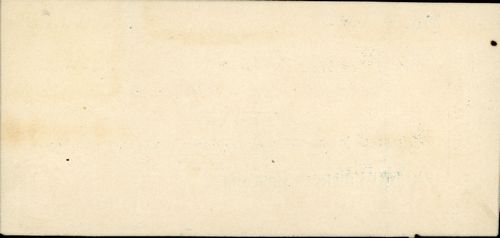 M3860 $1 El Hermosillense
M3860 $1 El Hermosillense
| date on note | from | to | total number |
total value |
||
| $1 |
La Colorada
Creston Colorada Company
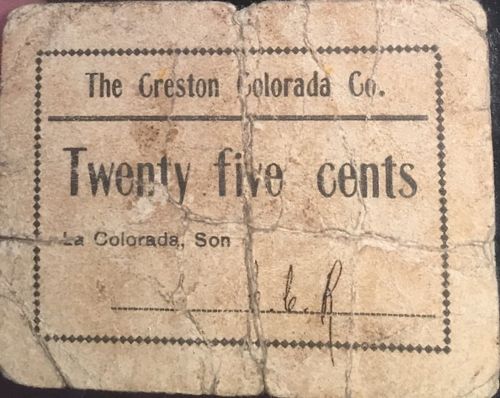
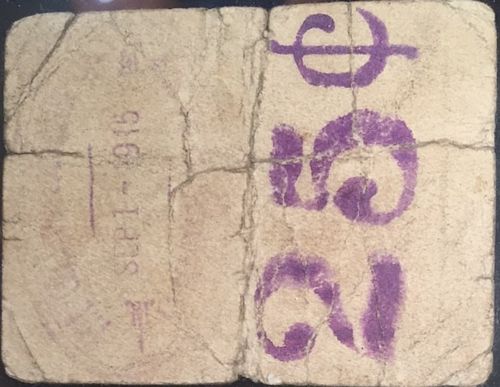 M3861 25c The Creston Colorada Co.
M3861 25c The Creston Colorada Co.
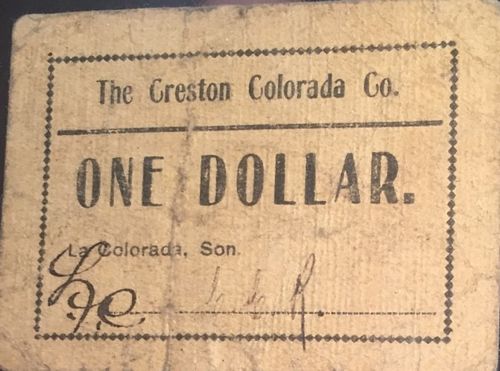
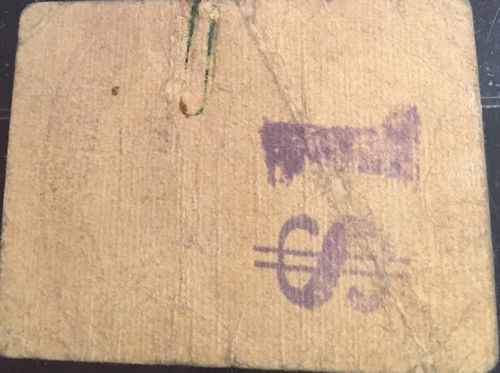 M3861.5 $1 The Creston Colorada Co.
M3861.5 $1 The Creston Colorada Co.
We know of twenty-five cents and one dollar (sic, in English) notes issued by the Creston Colorada Company, of La Colorada, dated 1 September 1915 and initialled by C. C. Roundtree.
|
The Roundtree family moved to Guaymas from San Francisco in 1862 and engaged in mining. By 1903 Charles Roundtree had for many years been the head book-keeper for the Creston Colorada Mining Company at Minas PrietasThe Border Vidette, Nogales, 22 August 1903. [if same peson] In 1900 C. C. Roundtree gained a concession to establish an ice factory and electric plant in Minas PrietasThe Mexican Herald, 15 June 1900: El Tiempo, 19 June 1900. In March 1905 he was named a director of the El Carmen Mining company, newly incorporated in Arizona, to take over and operate the Carmen mine, at Los Bronces, near San Javier, SonoraThe Mexican Herald, 10 March 1905. |
Production at the El Creston, Gran Central and Amarillas mine workings were already declining from 1912 onwards because of lower grade ore and the inflow of water. Political unrest associated with the Mexican revolution caused a halt to operations in 1916. Although watchmen were employed, in the hope that operations could resume, fires destroyed portions of the Gran Central plant as well as the Colorada inclined shaft, and much of the machinery and equipment was vandalized and stolen. In 1920, some equipment was sent to the Mines Company of America property at Dolores, Chihuahua, and in 1925, the remaining equipment was sent to the El Tigre mine at La Cura, Sonora.
Guaymas
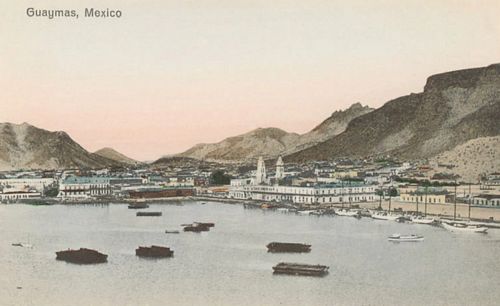
García y Barreras
In Guaymas the Cantina ‘El Congreso’ of García y Barreras issued cheques.
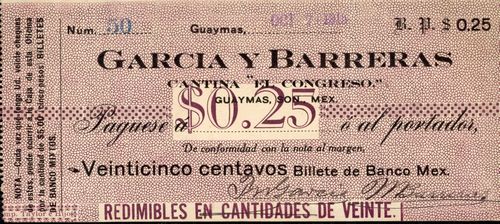
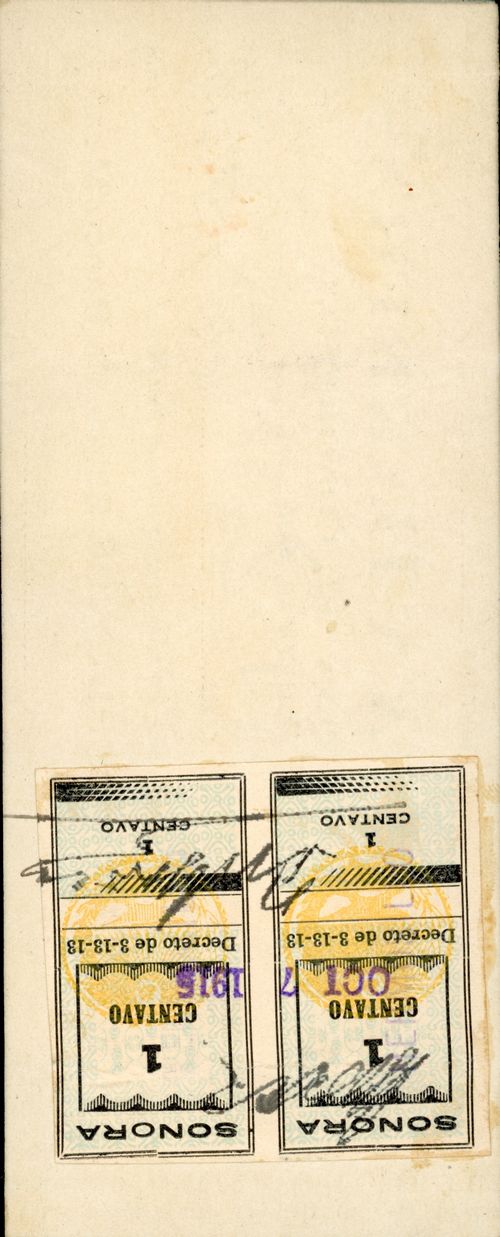 M3849 25c García y Barreras
M3849 25c García y Barreras
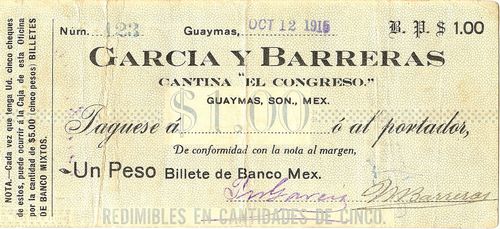
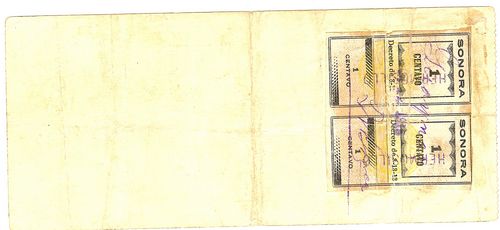 M3850 $1 García y Barreras
M3850 $1 García y Barreras
| date on note | from | to | total number |
total value |
||
| 25c | 7 October 1915 | includes numbers 29 and 30 | ||||
| $1 | 12 October 1915 | includes numbers 118 to 123 |
These were signed by [ ] García amd M. Barreras.
| [ ] García | 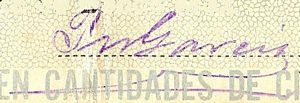 |
| M. Barreras |  |
Gaspar Zaragoza
 Gaspar Zaragoza was born in El Anchove, a fishing village located 50 kilometres from Bilbao, Spain, on 6 August 1865. He initially arrived in Mazatlán to work with the Echegurens, who had settled in that city since the mid-nineteenth century and become some of the most important businessmen in Sinaloa. Years later, Zaragoza decided to move to Guaymas, where he formed the "Compañía Minera Zaragoza", S.A., in 1894. On 12 February 1897 he married Matilde Maytorena Tapia, the sister of José María Maytorena, so linking himself with one of the wealthy Sonoran families.
Gaspar Zaragoza was born in El Anchove, a fishing village located 50 kilometres from Bilbao, Spain, on 6 August 1865. He initially arrived in Mazatlán to work with the Echegurens, who had settled in that city since the mid-nineteenth century and become some of the most important businessmen in Sinaloa. Years later, Zaragoza decided to move to Guaymas, where he formed the "Compañía Minera Zaragoza", S.A., in 1894. On 12 February 1897 he married Matilde Maytorena Tapia, the sister of José María Maytorena, so linking himself with one of the wealthy Sonoran families.
In September 1898 Gaspar Zaragoza joined Pedro Cosca in the company "Pedro Cosca y Compañía"This company had as limited partners the important Mazatlán mercantile company of "Wöhler, Bartning y Sucesores", made up of the Germans Bernardo Huthoff, Julio Bartning and Alfredo Wöhler and the Spaniard Pantaleón Ezquerra, who contributed $10,000 to the capital stock while Pedro Cosca, Gaspar Zaragoza and Gregorio Álvarez contributed $10,000, $5,000 and $5,000, respectively (AGHES, FN, tomo 163, escritura 22, 30 September 1898) which dealt in foreign and national goods as well as all kinds of commissions and commercial transactions. "Long ago this respectable firm was made known to the commercial world in Guaymas, making itself admired year after year for the progress it achieved, and it is fair to say that in 1881, when it was constituted by Messrs. P. Cosca, J. G. García and Juan N. Bringas, occupied a distinguished position. Fortunately, it was later taken over by two hard-working, hard-working and skillful merchants such as Messrs. Gaspar Zaragoza and Gregorio Álvarez, who with their excellent leadership have given it great prestige both inside the state and outside it, in the main European markets and in the largest markets of our country"Federico García y Alba, México y sus progresos. Album-directorio del Estado de Sonora, 1907, Hermosillo Sonora: Official Printing House.
In April 1901 Gaspar Zaragoza and Cosca's widow, Enedina V. de Cosca, reorganised the company as "P. Cosca y Compañía, Sucesores"The capital stock was composed of $75,000. Enedina V. de Cosca contributed $25,000, Wöhler Bartning y Sucesores $25,000, Gaspar Zaragoza $15,000 and Gregorio Álvarez $10,000. The company was extended in 1905 and came to an end in 1911. That same year Gaspar Zaragoza formed a new company "G. Zaragoza, S. en C." with the same articles and shareholders as Pedro Cosca y Compañía, Sucesores and so by 1913 was a storekeeper and commission agent in his own rightCorreo de Sonora, [ ] 1913.
Gaspar Zaragoza invested $5,000 in the founding of the Banco de Sonora and remained a shareholder until its bankruptcy in 1931 and subsequent liquidation in 1933.
When the Compañía Industrial del Pacífico, "Los Ángeles" was established in 1903 to acquire the Los Angeles yarn and fabric factoryAmong the founding partners of the Compañía Industrial del Pacífico, "Los Angeles" were Max Müller, as manager of the Banco de Sonora; Juan D. Castro, Adolfo Bley, Emilio Berand, Alfredo May, Germán Lüders, Felizardo Torres, Antonio Gilly, Geo Gruning as manager of the "Cervecería de Sonora", Miguel Latz, Luis A. Martínez, Gaspar Zaragoza, Celedonio Corvera, Manuel Abascal, and even G. Möller y Compañía Sucesores (AGES FN, tomo 371,escritura 144, 13 February 1903 , Gaspar Zaragoza was not only one of the shareholders, but also was part of the board of directors as segundo vocal. Zaragoza was also among the shareholders of the Compañía Jabonera del Pacífico, S. A., an industrial company established in the port of Guaymas, in which, by 1907, $65,000 had been invested

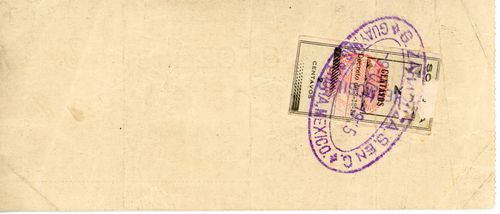 M3854 $1 Gaspar Zaragoza
M3854 $1 Gaspar Zaragoza
| date on note | from | to | total number |
total value |
||
| $1 | 9 October 1915 | includes number 635 |
In 1915 this company issued a cheque for one peso, dated 9 October, signed by Manuel Pacheco.
| Manuel Pacheco was elected to the board of the Cámara Nacional de Comercio of Guaymas on 26 January 1913Semana Mercantil, 2a Epoca, Año XXIX, Núm. 9, 3 March 1913. |  |
On 12 May 1916 Plutarco Elías Calles asked the government to apply article 33 of the Constitution to the “Spanish subject” (súbdito Español) Zaragoza for his obstructionist work and active propaganda against the government, and on 24 May governor Adolfo de la Huerta expelled himAGN, Gobernación, Periodo Revolucionario, caja 5, exp. 56. He went to live in Los Angeles, where he became more intricated with his brother-in-law, José María Maytorena, and helped him out financially. In August 1924 he sent Maytorena 2,500 dollars, even though he himself was suffering financially “because the Chinese element has completely dominated us and all of us businesses are suffering the consequences of having helped them to get back on their feet, to the extent that there are now very few houses that remain and we are all struggling to sustain ourselves”AJMM, Colección particular carpeta correspondencia Gaspar Zaragoza, letter of Zaragoza to Jesús Ramos.
Zaragoza died on 9 July 1938, in Guaymas, at the age of 72.
García, Bringas y Cia
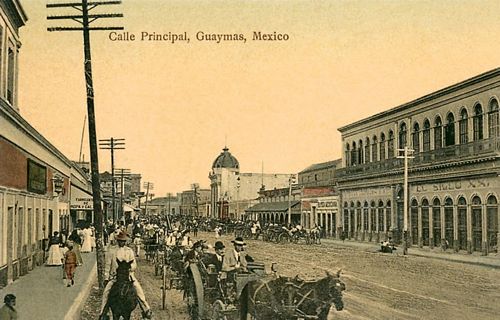
Calle Principal with the Banco de Sonora in the distance and El Siglo XX

In 1883 the Spanish Pedro CoscaCosca came from Burgos in the late 1870s and originally partnered Pedro Velarde in Velarde y Cosca formed a company with José G. García, recently arrived from Santander, called Cosca y Garcia Compañía. They brought in the Mexican Juan Nepomuceno Bringas to form Cosca García y Compañía on 1 July 1890The capital was Pedro Cosca $10,000.00; José García $10,000.00 and Juan Nepomuceno Bringas $15,000.00, which among other services offered finances for shipping companies.
The ‘El Siglo XX’ store of García, Bringas y Cia. was established in June 1898 by the three wealthy businessmen, Juan N. Bringas, José G. García and Luis M. Aguayo. They were commission agents and importers and the store, situated at avenida VIII 120, stocked all types of goods, such as cloths, wines, groceries and seeds. ‘The cash office was to the left of the entrance, with a wrought iron grill separating the accounts staff from the general public’Correo de Sonora, [ ] 1913. In 1907 the firm had annual sales of 480,000 pesos.
García, Bringas y Cia. Sucs. was established in 1910. It issued a cheque for one peso, dated 9 October 1915.
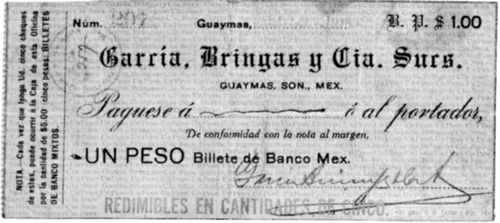 M3852 $1 García, Bringas y Cía.
M3852 $1 García, Bringas y Cía.
| date on note | from | to | total number |
total value |
||
| $1 | 9 October 1915 | includes number 207 |
Siu Fo Chong y Cia
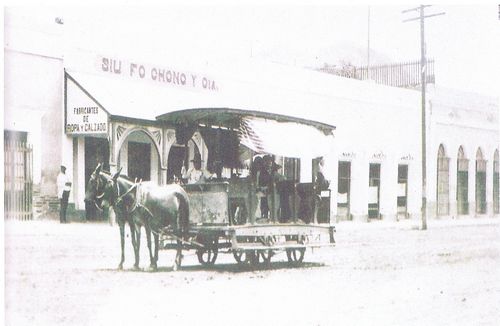
Siu Fo Chong y Cia was, alongside Tung, Chung, Lung, one of the two most important makers and distributors of clothes and shoes in the stateThe Chinese began to arrive in Sonora in the 1870s, often as contract labour for the railways. They later set up laundries and developed a virtual monopoly of the grocery stores in the smaller towns. With the collapse of the economy the Chinese were easy targets for public resentment. For example, at the beginning of March 1915 the Chinese merchants in Guaymas were accused of hiding goods and dramatically raising prices. The ayuntamiento therefore fixed prices for necessities under the threat of fines but the merchants then went on strike. A demonstration ensued, in which the mob broke into the casa comercial of Fac Fo Fung and other Chinese stores. General Fructuoso Méndez restored order, levied a forced loan of 40,000 pesos on the businesses, and used the money to buy necessities to resell at the fixed price. Similar outbreaks happened in other cities.. The founder had come to Guaymas in 1890 and established his business at the corner of avenida VIII and calle 22. He originally dealt in clothes but later branched out into shoes
Siu Fo Chong issued a cheque for one peso, dated 10 October 1915.
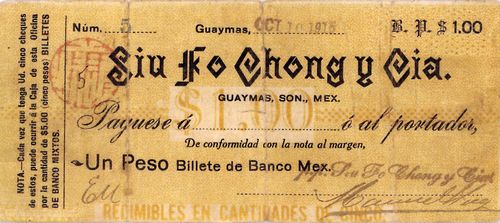
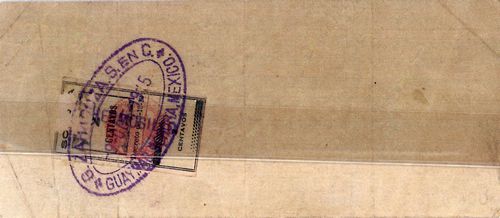 M3856 $1 Si Fou Chong y Cía.
M3856 $1 Si Fou Chong y Cía.
| date on note | from | to | total number |
total value |
||
| $1 | 10 October 1915 | includes number 5 |
This note was signed by [ ][identification needed] on behalf of the company.
 |
Compañía Industrial y Explotadora de Maderas
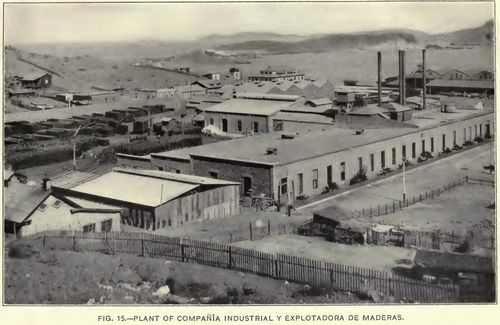
The Compañía Industrial y Explotadora de Maderas, S.A. was the largest diversified machine shop on the West Coast, including an ice-making plant, an ironmonger’s, a woodworking and carpentry plant, and a match factory, all located between calle 30 and calle 31. Its principal owners were Ramón Corral (50%), Mrs. Enedina Vasquez de Cosca and Luis A. Martínez. In 1897 Agustín Bustamante was general manager and by 1905 he was presidentFederico Garcia y Alva, Album-Directorio del Estado de Sonora, Mexico, 1905-1907.
The company issued cheques for 50 centavos and one pesos dated 7 October.
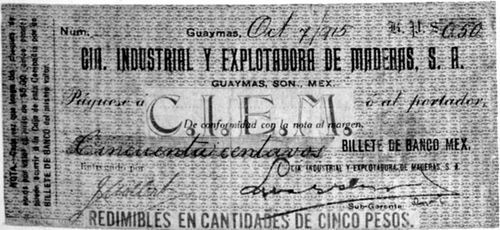 M3858 50c Compañía Industrial y Explotadora de Maderas
M3858 50c Compañía Industrial y Explotadora de Maderas
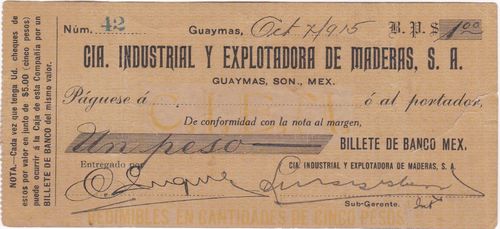
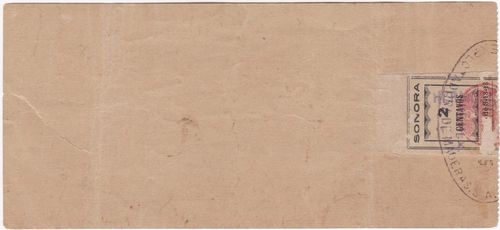 M3858.5 $1 Compañía Industrial y Explotadora de Maderas
M3858.5 $1 Compañía Industrial y Explotadora de Maderas
| date on note | from | to | total number |
total value |
||
| 50c | 7 October 1915 | |||||
| $1 | 1 | includes number 42 |
These were signed as 'entrusted by (encargado por) J. Luebbert or [ ][dentification needed] and Luis G. Iberri as sub-gerente interino.
| J. Luebbert |  |
 |
|
|
The Iberri family were long-established Guaymas merchants. Until 1924 the business of Señores W. Iberri e Hijos, Sucs. was one of the most important liquor stores in the stateAGHES, tomo 3627. Luis G. Iberri Carpena was for several years the manager of the Compañía Explotadora de Maderas. He was elected to the board of the Cámara Nacional de Comercio of Guaymas on 26 January 1913Semana Mercantil, 2a Epoca, Año XXIX, Núm. 9, 3 March 1913 and President Municipal of Guaymas from September 1914 to September 1915. In June 1920 he was appointed the Mexican government’s Agente Financiero in New YorkEl Mosquito, Tucson, Tomo IV, Núm. 92, 3 July 1920. Then, when the Compañía Naviera Mexicana established its head offices in Guaymas in December 1921 he was appointed the managerEl Mosquito, Tucson, Tomo V, Núm. 122, 7 December 1921. |
 |
Ferrocarril Urbano de Guaymas
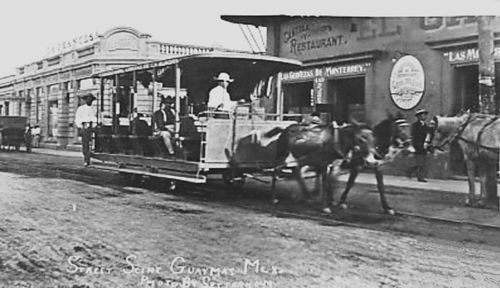
Streetcar passing the Gambrinus restaurant, on the ground floor of the Hotel Almada
At the beginning of the 1900s, Guaymas had a horsedrawn streetcar that ran the three kilometres from the garden of the Aurora (today avenida Serdan calle 9) to the railway station. The Ferrocarril Urbano de Guaymas, issued a cardboard token (carton) for a single journey, worth five centavos, printed by the local firm, Taylor e Hijo, but more information is required before we can confirm that these were used as currency.
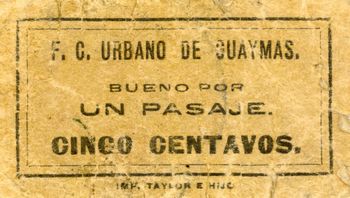
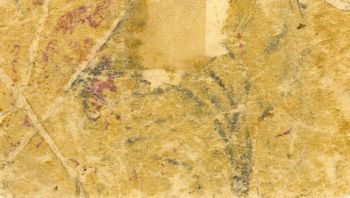 M3861.5 5c F. C. Urbano de Guaymas
M3861.5 5c F. C. Urbano de Guaymas
Ontagota
Ontagota is just to the west of Ciudad Obregón and was part of the development of the Richardson Construction Company.
Hacienda 25
Hacienda 25, in Ontagota, issued a cheque (the main text printed in English, so either for its American workers or incredibly patronising) for one peso dated October 1915 drawn on the Guaymas branch of the Banco de Sonora. The known examples are payable to and endorsed by A. Zazueta and signed by [ ].
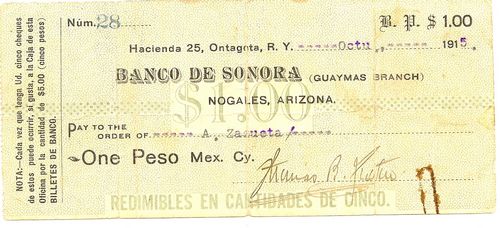
 M3866 $1 Hacienda 25
M3866 $1 Hacienda 25
| date on note | from | to | total number |
total value |
||
| $1 | October 1915 | includes numbers 28 to 111 |
| [identification needed] | 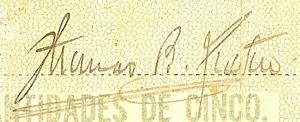 |
